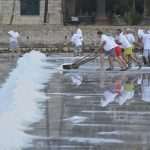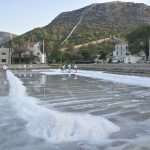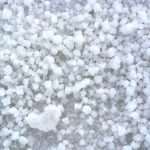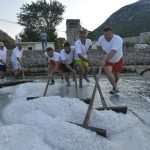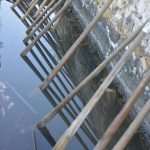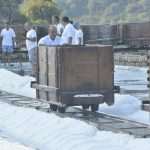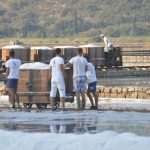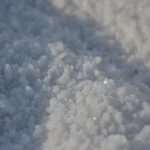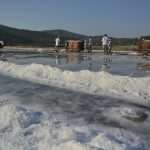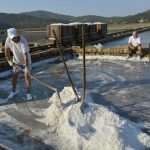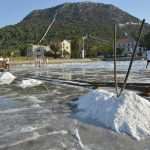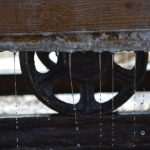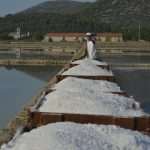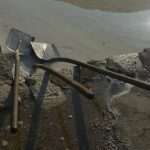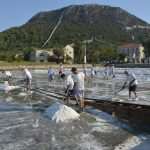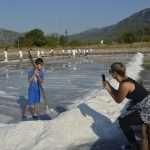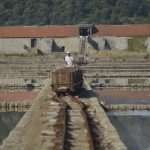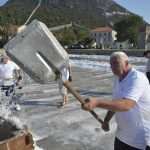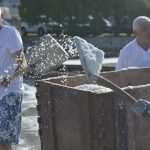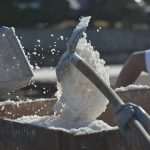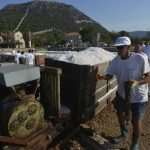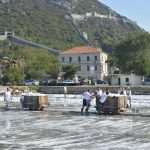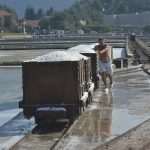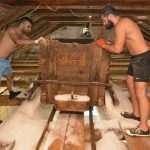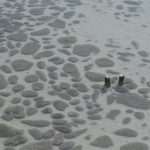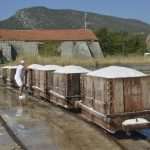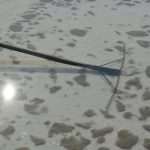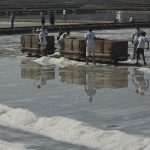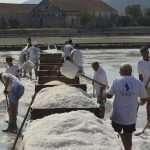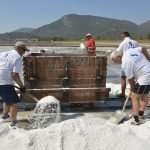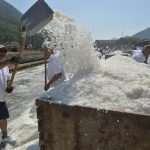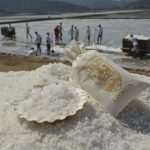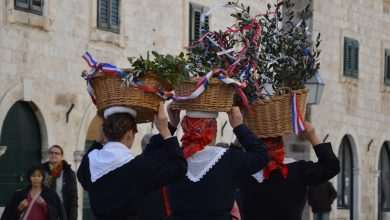…And we had a great, great time. This Thursday in saltern Ston was the closing day of the salt collecting, that lasted for fifteen days in total. Here, in Ston, are located the oldest and laregest ever preserved salt pans in this part of the world, marking the history of the Mediterranean.
Photo by Zvonimir Pandža for DuList/Just Dubrovnik
According to the owner od the saltern, mr Sveto Pejić , in this year’s harvest, 400 tons of salt and four tons of ‘fleur de sel’ or ‘salt caviar’ (the flower of salt) were collected. One decagram of ‘fleur the sel’ costs about 105 kunas.
The 2017 collecting was made from three stone pools, Mundo, from which the Dubrovnik Republic shared a salt to the neighboring populace who did not have the money to buy salt, and from the pools of St. Blaise and St. Peter and Paul.
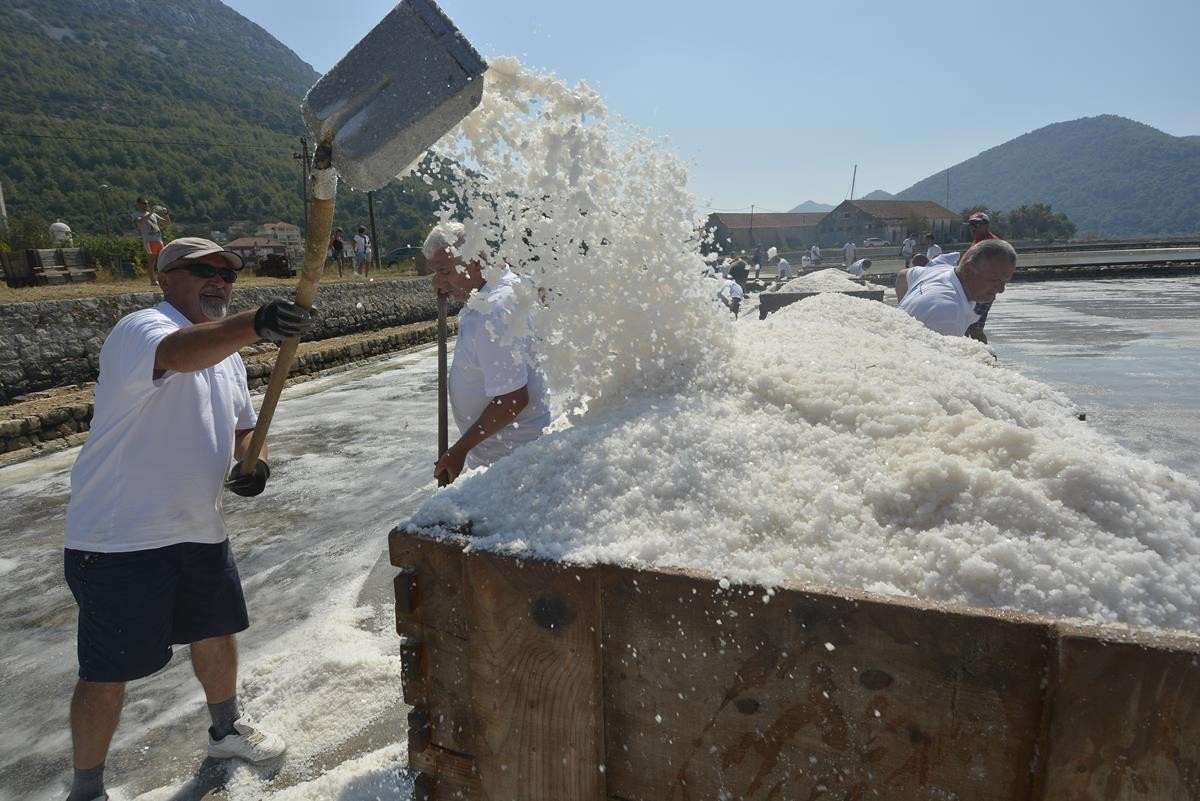
As they wrote on their web page, the tradition of harvesting salt has been passed on for over 4000 years and since then salt is produced in the same way with only the assistance of the sea, sun and wind. Solana (Saltworks) Ston consists of 58 pools divided into 5 groups as the whole sat producing process has to go through five stages which last one to two months depending on weather conditions.There are nine pools for the crystallization process and all but one Mundo (world) are named after saints (Francis, Nicholas, Balthazar, Anthony, Joseph, John, Peter and Paul).
A profit for the Republic
During the Dubrovnik Republic times the pools Blaise and Lazarus which have granite bottoms were also used and from which the purest salt was extracted and was then sent to the Wienna court. Salt is produced by a process of sea water evaporation in the big shallow pools of the salt pans and the harvest and salt production takes place during the summer months, more precisely from April to October. From the nine crystelization pools you can harvest about 500 tons of salt annually. In the Dubrovnik Republic during salt harvest time all the inhabitants of Ston and the sourounding areas that were of working age were involved in the harvest as salt production has always been of extrordinary economic importance.
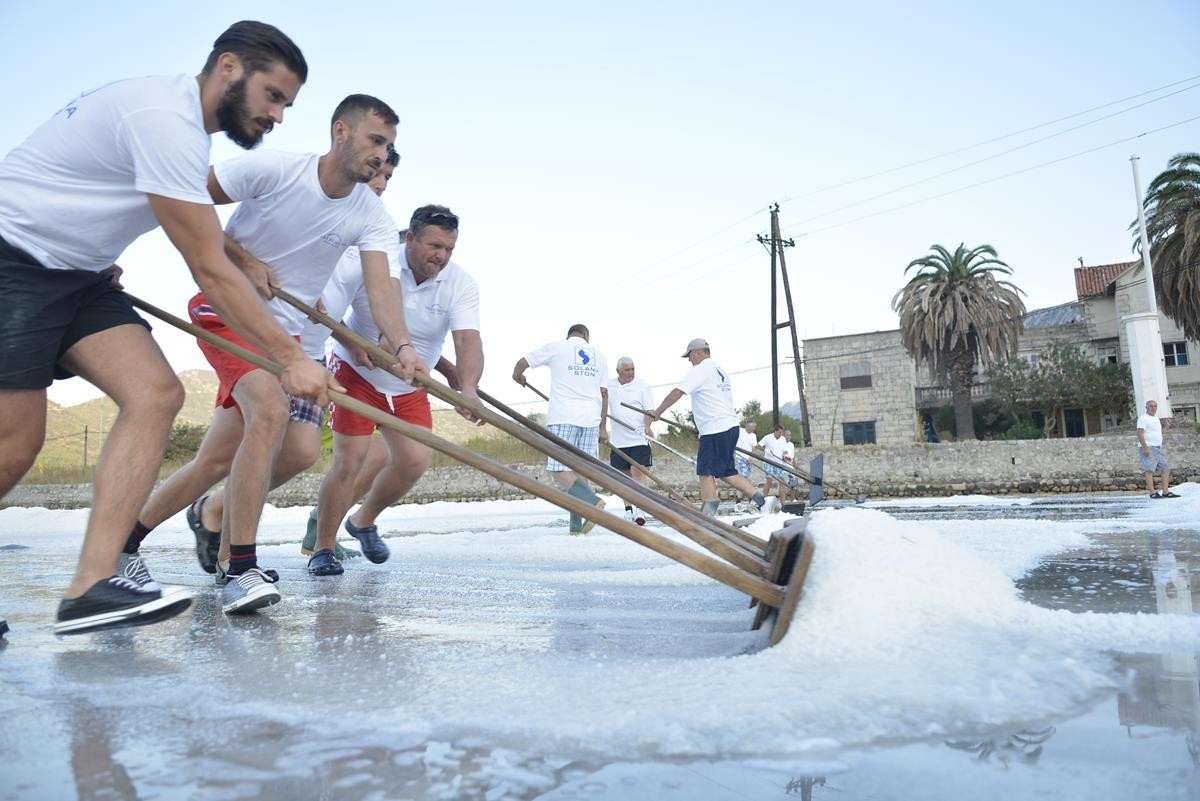
Production, transport and trade of salt in the economic sense in Ston was of big importance and brought a profit of 15,900 gold coins per year to the Dubrovnik Republic which was the highest profit. Solana Ston with its present arrangement dating back to the Dubrovnik Republic times represents the complexity of the salt production from the Middle ages and is a top class historical monument and is a very populat tourist site. The method of salt production has not changed over the centuries and in such environmentally friendly and healthy conditions guarantees maintanance of excellent salt quality which meets all the needs of today’s modern times.
The Salt Festival…
You can enjoy the history of salt on The Salt Festival which will be held from August 27 to September 1 and includes various events: concerts and music evenings, workshops for the youngest and a small fair of traditional products and handicrafts in the historic ambience of Solana Ston, all accompanied by gastronomic offer of the specialties of the peninsula Pelješac and the area of Dubrovnik-Neretva County. The idea of creating a festival in the Ston area was inspired by the story of salt and the Dubrovnik Republic, and if you wish to know more information, here’s the Facebook event.



